
Jupiterimages/Stockbyte/Getty Images
For a roast that's juicy and flavorful bite after bite, you should cook your roast to a medium-rare doneness. Though experts may be able to tell when something is done cooking by sight alone, you can use an instant-read meat thermometer to help you cook a roast to perfection. Start with a roast beef with a nice fat marbling throughout, and follow these steps for the perfect medium-rare doneness.
Choosing Your Cut of Meat
Before you get to cooking, you need to choose your cut of beef. The cut should have a nice marbling and ideally be a more tender cut, like a tenderloin or rib roast cut. Cuts that come from the neck or flank of the cow (such as chuck or rump roasts) are more suitable for slow cooking.
Set the roast out at room temperature up to two hours ahead of time – but no longer – and season it well with sea or coarse kosher salt. A roast cooks less evenly if it goes into the oven cold. Also, salting prior to going in the oven allows moisture to be drawn from the meat, seasoned and reabsorbed into the roast.
Preheat the oven to 475 F if you are cooking a rib roast and 450 F if you are cooking a tenderloin. You won't stay at this high temperature, but starting at high heat helps brown and crisp the outside of the beef. You can also use this time to prep your roasting pan. Line the bottom with foil, and oil or spray the rack to prevent sticking.
Season the roast with desired herbs and spices to taste. Consider using freshly cracked black pepper, whole peppercorns, dried thyme, oregano or your favorite seasoning of choice.
Place the beef on the roasting pan and put it in the center of the oven. After cooking your roast uncovered for 10 minutes, turn the temperature to 275 F and cook until medium rare. You should cook your roast about 15 minutes per pound, or until your instant-read meat thermometer shows the beef is 115 F for a rib roast and 118 F for a tenderloin when inserted in the thickest part. Since cooking time differs by cut, size, type of roast, your pan, your oven and a variety of other conditions, don't rely solely on the time. Keep your meat thermometer handy.
Move the roast beef onto a serving tray to rest for 10 to 15 minutes. Its temperature will rise another 5 to 10 degrees for a perfectly pink medium rare. Juices also will be reabsorbed into the muscle fibers during resting, sparing you the unfortunate loss of flavor and moisture that results when unrested beef is cut.
Related Articles

How to Slow-Cook Meat in the Oven
How to Cook a Steakhouse Roast

How to Cook a Prime Rib That Melts in ...

How to Make a Blackbuck Antelope Roast
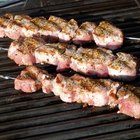
How to Cook Pork Loin
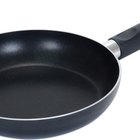
How to Cook Beef Top Round Pot Roast

How to Convection Roast a Brisket

How to Cook Texas Broil Roast
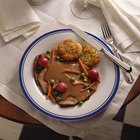
How to Use an Electric Roaster to Slow ...

How to Cook Prime Rib Using an Oven ...
How to Cook a Center Cut Sirloin of ...

How to Get Skirt Steak Tender

How to Cook a Petite Filet of Beef in ...

How to Cook a Beef Roast in a Roaster ...

How to Marinate a Top Round Roast

Different Cuts of Steak
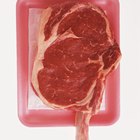
How to Cook a Steak on Grill Pan and ...
How to Cook Boneless Top Chuck Steak in ...
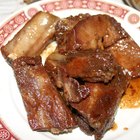
How to Grill Ribs on a Charcoal Grill
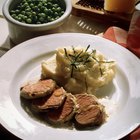
How to Make a Juicy Pork Tenderloin
References
- U.S. Department of Agriculture: Beef from Farm to Table
- U.S. Department of Agriculture: Roasting those "Other" Holiday Meats
- Serious Eats: The Food Lab's Complete Guide to Pan-Seared Steaks
- What's Cooking America: Internal Temperature Cooking Chart
- ThermoWorks: Meat Should Rest
- Bon Appetit: Never Overcook Roast Beef Again
Tips
- Store fresh beef below 40 F for up to three to five days, then use or freeze it. Airtight wrapping helps prevent freezer burn. Thaw a frozen roast for a day or two in the refrigerator, depending on its size.
Warnings
- The U.S. Department of Agriculture recommends cooking roast beef to a minimum internal temperature of 145 F.
Writer Bio
Eric Mohrman is a food and drink, travel, and lifestyle writer living in Orlando, Florida. He has professional experience to complement his love of cooking and eating, having worked for 10 years both front- and back-of-house in casual and fine dining restaurants. He has written print and web pieces on food and drink topics for Visit Florida, Orlando Style Magazine, CrushBrew Magazine, Agent Magazine, Dollar Stretcher Magazine, The 863 Magazine and other publications.
Photo Credits
Jupiterimages/Stockbyte/Getty Images